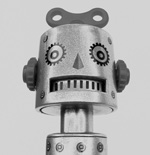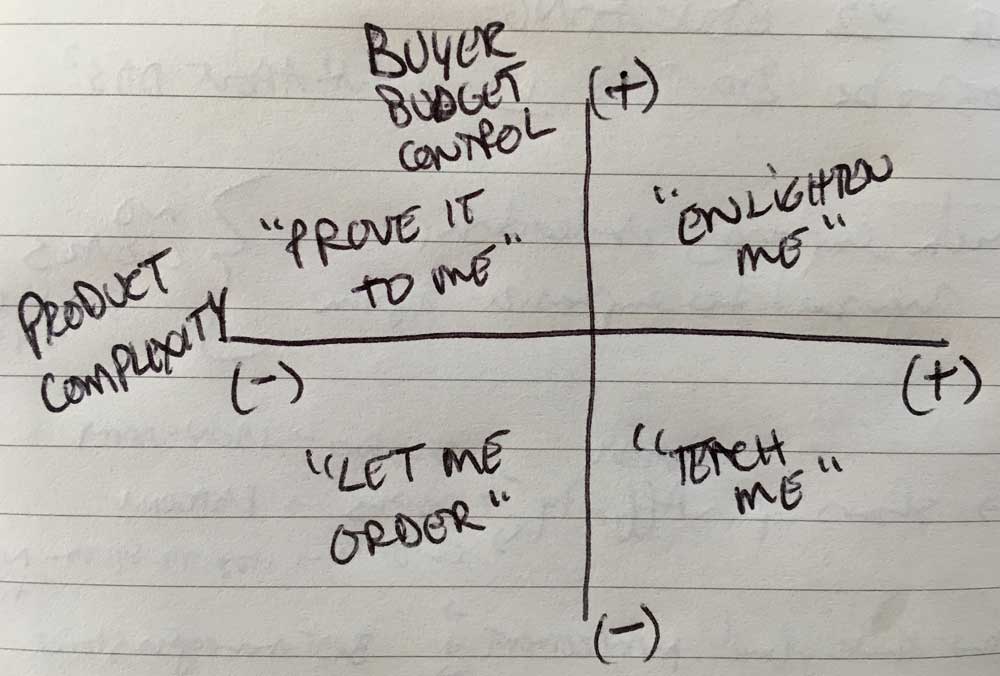Selling and Robots and AI and Doctors
Selling and Robots and AI and Doctors

Bleep boop.
News from the Chambers Pivot ticker tape. IBM’s Watson and Salesforce’s Einstein are getting together to make us smarter. It comes as I’ve been immersing myself in sales and marketing software. Researching dozens of the thousand plus startups promising to make selling automated. It’s a trend. A vision of the future where the machine is able to predict where and when a buyer is ready to purchase. Getting us to the holy grail of the right message to the right person at the right time.
It will happen. I just don’t think we’re close to having it happen today.
It reminds me of the story about challenges teaching robots to smell. You can read a little bit about it here. The sensors in robot noses pick up molecules and using a set of descriptors that researchers use to describe smell, this robot can predict what words we might use to describe a particular scent. The challenge isn’t getting the machine to detect molecules. The robot isn’t limited by its processing power. No, it’s limited by the words we use to describe smell and the limits of what we humans know about smell.
Consider that and contrast it to sales and marketing. As little as scientists know about smell, they know considerably less about how humans make decisions, the most basic component of a sales transaction. If Artificial Intelligence is limited by our ability to describe what is happening, our lack of common language describing the sales cycle and customer decision process will keep us a long way from robots doing that job. You only have to spent a morning in a sales department debriefing a sales call to wonder, “How is it that two sales people of equal knowledge and capability can come to such wildly different conclusions about how a call went and what the next steps are?”
How AI will infiltrate selling
Here’s my prediction as to how AI travels through the sales process. I’ll use my sales technique orientation grid to help.

In the lower left, where the products are not complex and the decision maker’s budgets are fixed, AI is going to take root. It will move into the more complex products that require instruction, then to the simpler products that solve bigger business problems, and finally into the holy grail of selling, complex products sold to buyers who can prioritize budget.
Want some examples?
Lower left, think office supplies and Amazon Business. The robots are already replacing sales people with predictive algorithms.
Lower right, think of your printing provider. To get something printed can be mind-numbingly complex, but most projects are sold to a fixed budget. The robots aren’t there yet, but if you know what you want, an order is a click away.
Upper left, think of a Software as a Service provider that sells to the Fortune 1000. Their product is relatively simple and the directors they sell to have the ability to allocate budget, but there are big integration questions and customizations that need to be attended to. The complexity is on the organizational side, involving buy-in and politics. Robots can play in parts of the process right now, but it’s still very human.
Upper right, think of advanced tax planning and investments sold to the Fortune 1000. The tag “enlighten me” describes it. The buyer has the ability to direct as much budget as necessary, but they need to be enlightened as to what the options are and then make a decision. Again, here the robots can help with parts of the process, but getting the ball over the goal line requires a deeper understanding of decision making.
Greg, you say, but aren’t you underestimating the power of the machines?
Doctors and AI
Probably. Let me tell you about the doctors. Right now, the doctors are using Watson to help them make diagnoses. This is a complex problem solving exercise. Take the story of my friend who one day found that he couldn’t keep his balance. His face starteddrooping and everyone assumed a stroke. They went to his doctor but the cause wasn’t apparent. Lots of tests – lots of blood – but no solution. Things got worse. That led to cat scans and MRIs but still no diagnosis. Fed up with his doctor’s progress, he vented online and someone suggested he talk to her specialist. This doctor took one look at him asked two questions, and said “it’s shingles in your eye.
That commercial where they say “shingles in lurking?” Well it happened to him! Lucky for him, the second doc had seen it before. He is fixed and after some physical therapy, you’d know no difference.
My point? AI like Watson can help with that. Thousands of docs have a vested interest in contributing to the big brain in the cloud that may help a patient like my friend.
The difference between healthcare, where everyone is working toward a good outcome without regard to profit or quota, and business to business sales couldn’t be more striking. How does AI solve for and account for human greed? Are we going to be able to teach the robot how to account for why someone who shouldn’t pays $100K for a sedan and the person with money like Buffett is happier in a $50K car? Yes the robots will impact all areas of sales, but unless you’re in the lower half of my grid, don’t panic. Yet.
Here’s my advice for the business owner. Take advantage of whatever technology is out there to help your team sell, but don’t expect it to make more than a PT person difference. In other words, if you are going to pay a top level rep $150K and expect a $1MM contribution, then expect the robots to contribute the equivalent of an average rep, working part time. It’s there right now for the taking. Jump in.
Bleep boop.
